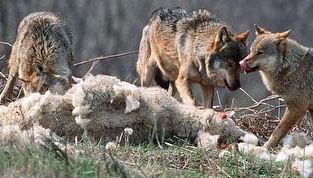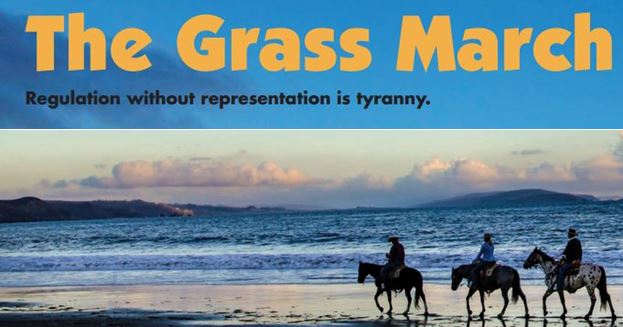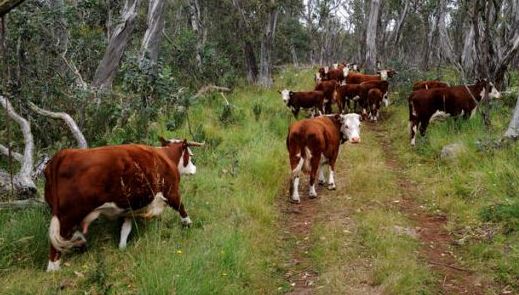Go Fund Moo
by Dan Dagget
Originally published in RANGE magazine Summer 2019 edition
Nature has been sending us messages for a long time trying to tell us that abandoning our evolved eco-role as herders and harvesters of herd animals such as bison and cows is not good for Nature or for us. One element of that communication, I believe, has been the current increase in wildfires, including last fall’s Camp Fire, described as “the deadliest and most destructive wildfire in California history to date.”
This 153,336- acre wildfire that raged in and around the central California town of Paradise from Nov. 8-25, 2018, resulted in 86 deaths and destroyed 18,804 homes and other structures. Science and firefighters tell us that recently wildfires have increased in size, severity, and frequency. What’s more, the trend is likely to continue, says a recent article in the Washington Post.
Why and how is that happening? An answer is offered by no less than Nature herself in a series of messages offered side by side so they’re easy to interpret. Those side-by-side messages reveal how different types of human management can make the land more (or less) fire prone. In fact, one of those communications comes from the Camp Fire itself.
A RANGE reader sent the editor a couple of images downloaded from Google Earth. The photos appeared, rather clearly, to show that the Camp Fire had stopped on the ungrazed side of a fence that enclosed an area that had apparently been grazed. Inside the fence, on the area that had apparently been grazed, the grass grew green and unburned. Also, the house apparently associated with that area was also unburned. Outside of that fence, on the area that appeared to have been ungrazed, virtually everything had burned—not only grass, trees, and bushes, but most of the houses and other structures. What stopped the fire on the straight line created and enclosed by that fence? Not the fence wire. Wires, barbed or woven, can’t stop a raging windblown wildfire. What stopped the fire had to be the condition of the land on the two sides of the fence, a difference of condition that could stop—had stopped—a raging wildfire as effectively as a wall of water.

Checking various sources, I found other places where wildfire has burned an area of rangeland and stopped right at the fence. Among these are photographs from a U.S. Geological Survey report on the Murphy Wildland Fire Complex (2007) in Idaho and Nevada. The photos were taken by, among others, Karen Launchbaugh, director of the University of Idaho Rangeland Center in Moscow, Idaho, and Wally Butler of the Society for Range Management.


Another fence line fire-stopper photo was published by the Realtors Land Institute website (rliland.com) and Paul Bottari of Wells, Nev., a member of its 2017 Government Affairs Committee. A 6,000-acre field had been grazed by 150 to 200 cattle six weeks before a fire was ignited by an electrical transformer and burned across an adjacent field that hadn’t been grazed yet. “When the fire reached our fence,” wrote Bottari, “it stopped except where there were a few stringers of high grass still remaining.”

Still another dramatic fence line firestopper photo was posted by Zak Miller on the Idaho Cattle Association’s Facebook page with the link #grazeitdontblazeit. This leads to an obvious question. Could the set of conditions on the unburned side of these fences be duplicated? If it can, you know there are plenty of people who would want those same conditions on their side of the fence or property line or at least on an area near and around their home.

Have we stumbled on a marketable service here—grazing as a fire prevention/neighborhood protection tool? Actually, this tactic is already being used in a number of places. Goats have been used for some time to graze land surrounding the Diablo Canyon Nuclear Plant in California to reduce the danger of wildfire.

Closer to Paradise (about 100 miles away), the town of Nevada City, Calif., has created a “Goat Fund Me” page (www.gofundme.com) to raise money to hire ranchers to use goats to clear flammable brush and grass from a 450- acre greenbelt around that town. Adding to the evidence that grazing to prevent wildfire is a growing phenomenon, the vice mayor of Nevada City, Reinette Senum, says the town is using “Goat Fund Me” to raise money fast because goats are being hired out so quickly for fire prevention around other municipalities that they’re reaching full employment.
The good news is goats aren’t the only grazing fire stoppers. Cattle achieved some of the successes illustrated above. The other good news is wildfire prevention could play a significant role in keeping a lot of American ranches and ranchers in business. In fact, it’s a ranching product even vegans can love.
One rancher who offers this service says he includes something in his marketing spiel intended to appeal to vegans and vegetarians: “I tell them, ‘After you train your workers, the last thing you want to do is eat them!’” “But, wait a minute!” I know some of you are protesting, “How can grazing stop a wildfire, except by having the animals eat everything burnable! That causes overgrazing, which accelerates climate change, which causes more fire!”
A photo downloaded from one of Allan Savory’s websites shows a ranch in Australia that provides an answer to that question. As Savory has deservedly become known for pointing out, when livestock grazing is conducted in a manner that mimics the evolved interaction of humans and other natural predators with wild grazers and the plants they graze, it actually stimulates the life functions of the plants, enabling them to retain more moisture, which makes them more resistant to wildfire.
Viewing the Australian ranch photo, you can get an idea of how grazing can stop wildfire at a fence line by making the land on the grazed side too green and healthy to burn. Also, while we’re talking about climate change, the reason those plants on the grazed side are so green is because they are growing, and as they grow, are regrazed, and regrow, they pump carbon out of the air and into the soils for the grazing animals that feed on them.
Carbon sequestering
So, grazing is not only an effective tool against wildfire, it sequesters carbon and combats climate change too. To me, that means ranchers should be soliciting contributions for fighting global warming as well as for making the West more resistant to wildfire. Ranchers are going to get really rich, as rich as environmentalists! (My article “Eco-Profits” in RANGE, Spring 2017, reveals that environmentalism is a multibillion-dollar business. You can find it at www.rangemagazine.com.)
Time to start a “Go Fund Moo” page
Hearing what I’ve just told you, a friend said, “Wildfires are still going to happen; you can’t graze everyplace!” Aware of this limitation, some ranchers and ranching groups have adopted the tactic of creating firebreaks by grazing. That way they can use temporary fences and/or herders to focus grazing around the most valuable, most vulnerable areas to make them more fireproof without “grazing everyplace.” (That’s what Nevada City and Diablo Canyon are doing.) Last, but certainly not least, all of this raises one more very important issue— maybe the most important. If grazing works to limit wildfire as well as these images seem to indicate—then, removing grazing from open country ecosystems (especially those that include grassland areas and almost all do) apparently makes those areas significantly more susceptible to wildfire. From this it seems to follow that removing grazing from wildfire-vulnerable areas could be extremely unwise, even hazardous. In fact, it might even make those who are responsible for that removal accountable and liable for damage thus caused, including loss of homes and even lives.
Dan Dagget was an eco-radical until he discovered that rewards for results are more effective at healing ecosystems than the regulation and protection of contemporary liberal environmentalism. Check www.rightwaytobegreen.com.




Logging also keeps you from burning.
And low level winter burns space the trees out and make a wetter forest floor.
Logging also keeps you from burning,
Also low level winter burns help space the trees out which makes a wetter forest floor.